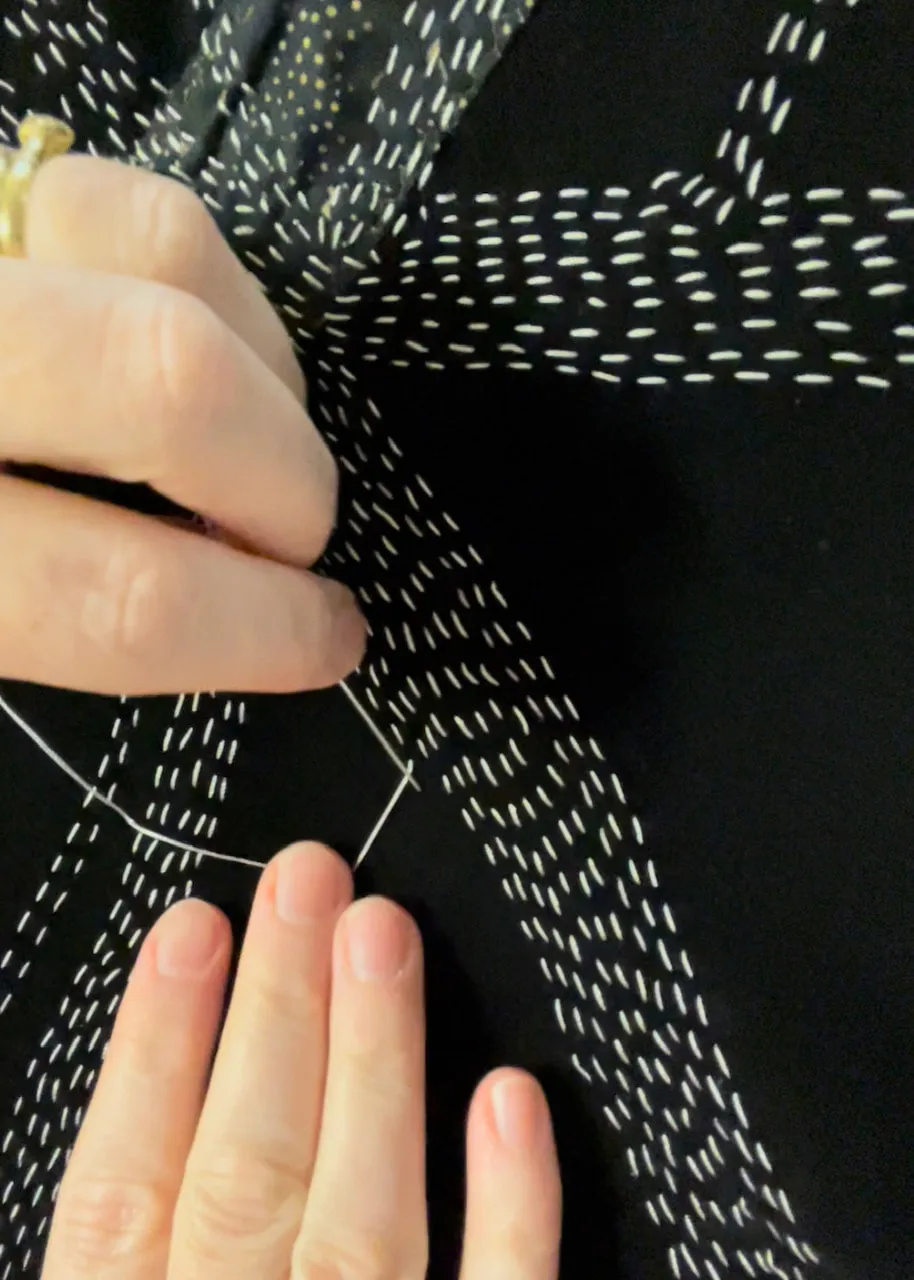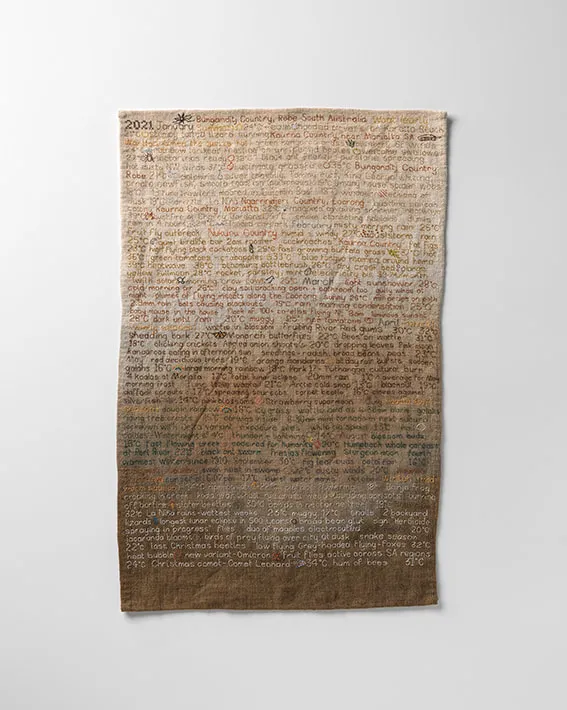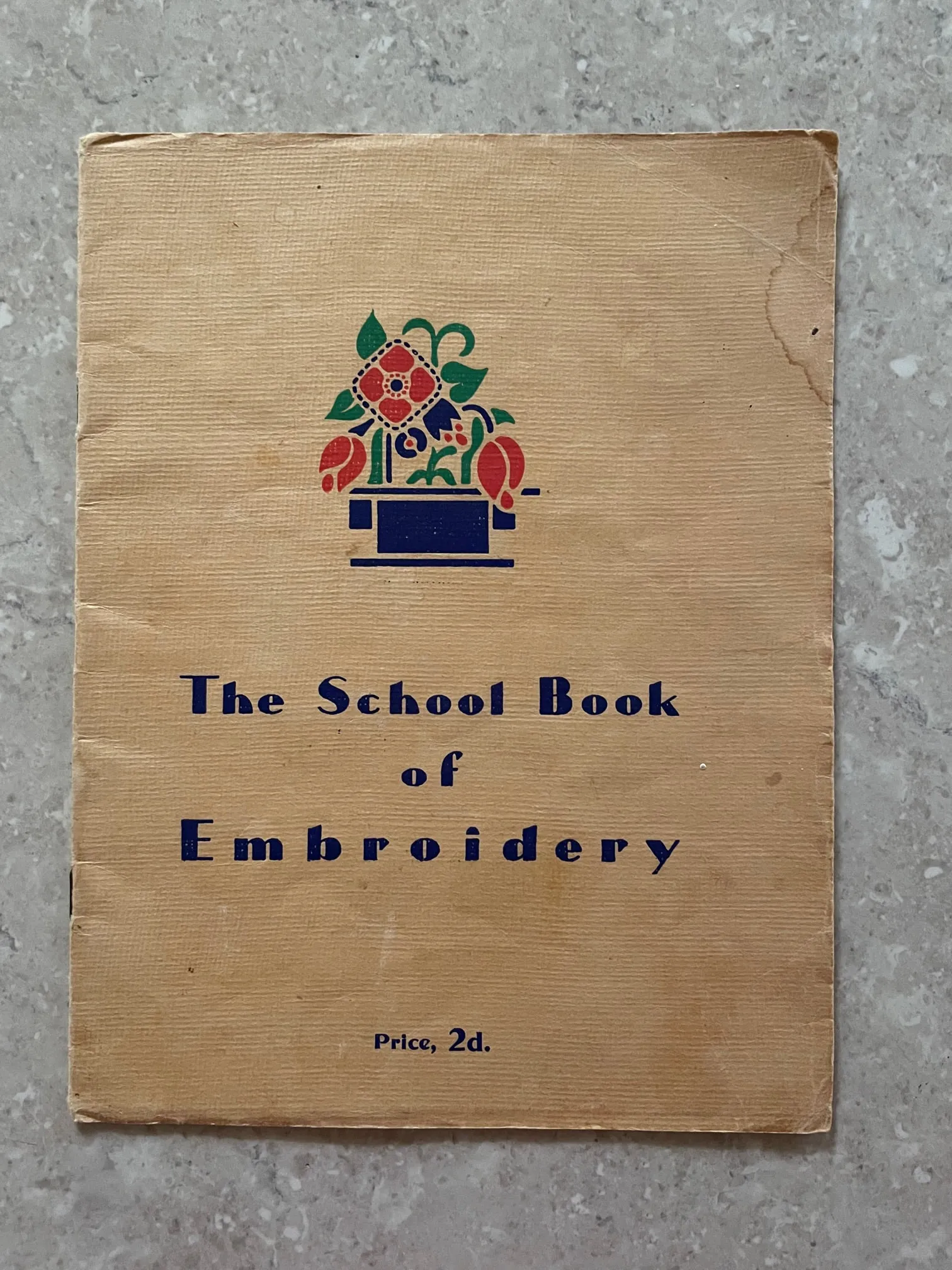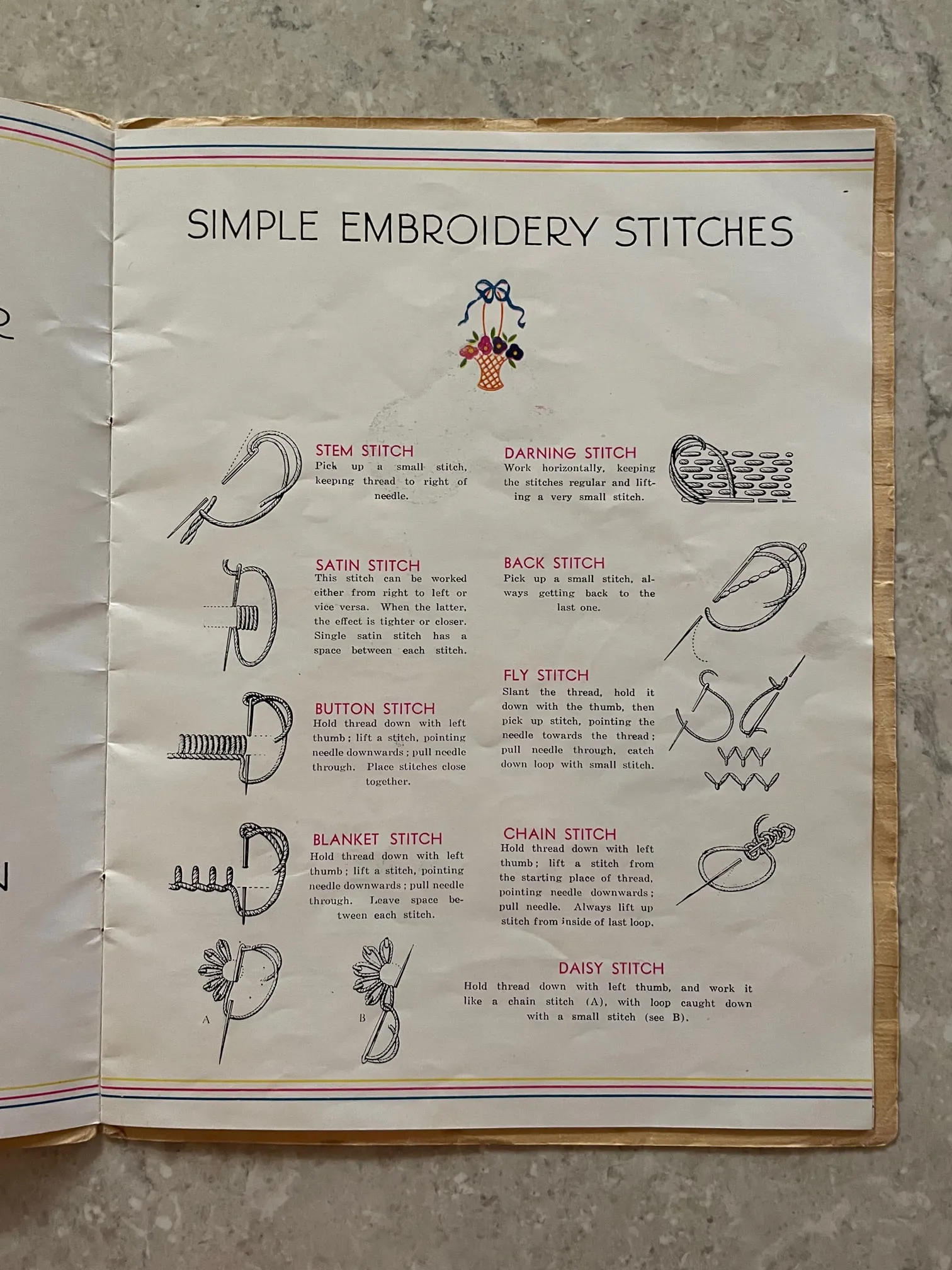Great Decelerators: Touching the world
Unlike the ‘Great Acceleration’, needlework can reinstate traditions of care and value in their reminders of bodily pace, rhythm and ancestral time.
Photograph by Sia Duff
Courtesy of Guildhouse

PACE: fast and slow
"Some earth systems scientists describe the Anthropocene as the "Great Acceleration", the sharp rise in the destructive environmental effects of human industry since the second half of the twentieth century. The massive increase in carbon dioxide, methane, and nitrate emissions into the atmosphere from industrialized agriculture, mineral extraction, petroleum-driven production, and globalized shipping/transportation networks has outpaced all other rhythms of life. Yet the Great Acceleration is best understood through immersion in many small and situated rhythms. Big stories take their form from seemingly minor contingencies, asymmetrical encounters, and moments of indeterminacy. Landscapes show us."
excerpt from 'Introduction: Haunted Landscapes of the Anthropocene', in Arts of Living on a Damaged Planet, eds Elaine Gan, Anna Tsing, Heather Swanson, Nils Bubandt, University of Minnesota Press, 2017: p. G5.

I have learned from stitching that the rhythms of making with my hands brings me back to the rhythms of my body; the in and out of the needle, the in and out of my breath. I liken this in and out, under and over of the needle to walking, pacing, or following a pathway with repeated steps. More so than the rhythms of a mechanised world, bodily paces find commonalities with other beings; of lizards, trees, mossy rocks, the ocean, the universe. Each has their own pace and I have my own, which is frequently forgotten in my shuttling around. Stitching brings me back.

This Noticing Sampler charts a year of paying attention to the slight shifts and events in my local natural world. The sampler begins with an acknowledgment of being on Bunganditj Country (the Southeast of South Australia) in January, then back to Kaurna Country (Adelaide region) soon after, for everywhere in Australia always was and always is Aboriginal land. It is the hope with this sampler that it becomes a marker of time; pausing for observation the state of the natural world in 2021. There were multiple fish species in the seas around Robe, leaves turned red early May, and a Code Red for Humanity was issued in August. This sampler was made in response to reading Naomi Klein’s This Changes Everything (2014) where she describes that major climate events are first witnessed as incremental changes that are ‘slow moving and intensely place based’ (2014: 158). She notes immense change begins with small changes but that noticing changes ‘requires the kind of communion that comes from knowing a place deeply, not just as scenery but also as sustenance … passed on with a sense of sacred trust from one generation to the next’ (2014: 159). As an Australian with settler colonial ancestry, I do not know my home deeply. I have inherited out-of-place traditions, and as a contemporary individual with climate control and imported food, I am dislocated from my natural environment daily. This sampler is a beginning, a recording of now, to compare to the future years. A way of slowing down to notice changes.

